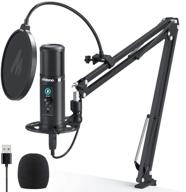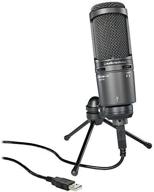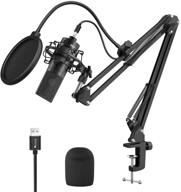
Review on 🎤 Comica BoomX-D2 2.4G Wireless Lavalier Microphone System with 2 Transmitter and 1 Receiver for Smartphone, Camera, Podcast, Interview, YouTube, Facebook Live by Domonique Rieder

Good mics but with GREAT CAUTION
UPDATE: I am returning these mics. Despite the quality, ease of use, and everything I originally wrote about earlier, there is a huge 20ms latency in the transmission of sound from these mics that I didn't notice until I tried running it into my camera. That's a big deal. Maybe not for YouTubers, but most people who use them to connect to their camera will notice a huge amount of lag resulting in a distracting loss of sync. It's a shame because these mics showed so much promise. They are practically useless in any semi-professional or semi-professional environment. ORIGINAL REVIEW: At first I was concerned that this would suffer from poor sound quality, but this system really surprised me. Both the built in mic and the included Lava wireless sound GREAT and I look forward to using them more often. I like the fact that the transmitters are so small. Like, they're FUNNY small. So small that your talent can go with them and forget they're still wearing them. But it allows you to more easily hide the mic on the Talent (if you're worried about seeing the mic). Plastic, but at the same time hard and durable. The LCD screen is very bright and easy to understand. The two receivers made it more appealing to me than its direct competitor: the Rode Wireless Go system, which only includes one transmitter. You can easily split two transmitters into different channels (left/right = 1 mono and 1 mono) or select mono to combine them into one channel (left+right = 1 mono). Other cheap systems do not allow this. This offers an incredible amount of control. While this may not be the system you would use on an expensive film set, you certainly CAN if you want to. The fact that they can be powered by an external USB battery makes them even more convenient. The system also has basic gain control, although cranking it up to +12dB introduces a bit of hissing, which leads me to think it's wrong. no *real* gain. If you use this with a recorder with good quality preamps you don't need to apply gain and the normal setup should sound fine. I was also wondering why there isn't a setting to tone down (lower) the output. Signal for more sensitive preamps. After playing with the patch cords I found that the cord labeled "Sony etc." actually has circuitry literally built into the cord itself that steps down the level from LINE to mic level. This is an interesting solution, but a major disadvantage could be losing a cable or accidentally mixing up cables and plugging them into a low-level input, requiring you to turn up the input volume of your recording device and introducing noise. I think I'd probably prefer this setting to be available on the receiver itself, but it's not the end of the world. It's just a very interesting way to solve a problem that I haven't seen before. I haven't done a distance test yet, I haven't seen a signal break yet. I haven't been able to see them break apart yet, and it's likely I'll never be in a position to push the range limit to the limit. Normally, my talent never extends more than ten feet from the camera, but I think I could go a lot further. You're worth it. like wow
- A dream come true
- Ugly packaging
New products
Comments (0)
Top products in 🎤 Microphones

Revolutionize Your Sound with the Blue 1967 Yeti Pro USB Condenser Microphone, Multipattern

20 Review

Professional USB Microphone with Zero Latency Monitoring - MAONO AU-PM422: 192KHZ/24BIT Cardioid Condenser Mic with Touch Mute Button and Mic Gain Knob for Recording, Podcasting, Gaming, YouTube

19 Review

Enhanced Performance: Audio-Technica AT2020USB+ Cardioid Condenser USB Microphone (Renewed)

19 Review

🎙️ Fifine USB Streaming Microphone Kit: The Ultimate Condenser Studio Mic for Professional Recording

15 Review






